I come by my love for cryptids, creatures not known for certain to exist, very honestly. I grew up in a town on a lake with a well-known monster named Champ. Champ was the logo for the bank where I had an account from a very young age (I won 3rd place in an art contest that came with $10 and a bank account), which meant I got a birthday card in the mail from this particular cryptid. I had a great aunt whose sighting made books and magazines about the subject, and I even got to see footage of my monster on the original Unsolved Mysteries.
So, did I really believe in Champ? Sort of? It’s more fun to believe in this lake monster than to shun it. After all, there are cases of animals that were considered cryptids but turned out to be real, like the giant squid. Unsurprisingly, many of these examples involve colonizers not believing Indigenous people. And I heartily recommend the books Bunk and The Unidentified for a more historically informed approach to what might otherwise seem like good old-fashioned fun. Because belief in cryptids can put you in league with other people whose harmful and/or conspiratorial beliefs you probably don’t want to be associated with.
There’s also an interesting question of what counts as a cryptid vs. what counts as a folkloric creature. The world is chock full of tales of strange and otherworldly creatures. But are these creatures that people believe in for real or spin stories about for fun? I suspect it would take a whole degree in folklore to really tease out that distinction, and I’m guessing things change over time. So I won’t worry about it too much, especially since one of my favorite creature’s time is drawing nigh; see the letter Y below. So today, we take a trip through the alphabet and around the world, finding cryptid cats in lands far and wide.
Cat Cryptids from A to Z
|
|
A is for the Alien Big CatsWhile I wish I could say that Alien Big Cats, or ABCs, hail from outer space, in fact, they’re just British. This is the term used for cats resembling lions, leopards, cougars, etc., spotted in the United Kingdom, where there are no native big cats. We’ll get into some specific varieties later in this list. |
B is for the BakangaThis feline, spotted like a leopard but maned like a lion — also barking like a dog! — has been spotted (see what I did there?) by people from the Ubangi region of the Central African Republic. Could a leopard and a lion have bred? Is it a heretofore unknown species of hyena? Whatever it is, it’s a bakanga! |

C is for the Come-at-a-BodyThis amazingly named cryptid hails from the White Mountains of New England. A little critter with kitten-soft fur, it will rush up on you, stop inches away, and spit before scurrying off. This animal was first named in the 1939 book Fearsome Critters. |
D is for the DingonekEuropean big game hunters who traversed the wilds of Africa around the turn of the 20th century reported some very strange creatures, including the dingonek. Described as a “jungle walrus,” the dingonek has a head like a saber-toothed cat, armor like an armadillo, and a fin tail like a dolphin. You know those hunters and fishermen, always telling you about the one that got away… |
E is for the Eastern CougarSome cryptids are animals presumed to be extinct, but some people hold onto hope. The Eastern Cougar is one such cryptid, considered a subspecies of the cougar known to the Western US. This subspecies was proposed in 1946 but declared extinct in 2011. Still, thousands of people in the Eastern US have claimed to spot cougars since the 1960s. |
F is for the Fiskerton PhantomHere’s an alien big cat! Or maybe a bear. The four girls who saw this fearsome beast in 1997 couldn’t be sure. They saw something about four feet tall and jet-black eating a pheasant and ran. When they came back, they found big paw prints. Several more reports followed. |
G is for the GlawackusGlawackus belongs to the realm of fearsome critters, creatures reported by lumberjacks in 19th and 20th century America. With a cackle like a hyena and a body like a bear-lion-panther hybrid, the glawackus will wipe your memory if you look into its eyes. Last spotted in 1939 in Glastonbury, Connecticut. |
H is for the Huan CatThe Classic of Mountains and Seas is a Chinese classic text that compiles mythological creatures. You may have heard of mythological creatures like the nine-tailed fox from books like Wicked Fox, but the text also mentions the Huan, a one-eyed cat with three tails. It can mimic the sounds of other animals. |
I is for the IemischThis water tiger creature hails from Patagonia in South America. First described by an Argentine naturalist in 1898 as something like a jaguar-otter hybrid, it’s also big enough to drag a horse underwater. Curiously, the anthropologists trying to track this creature down did not find the word “iemisch” consistent with any Patagonian language. |
J is for the Jangsan BeomAlso called the Jangsan tiger, this cryptid is a recent addition to the list, first spotted in 2010 in South Korea. The creature is a quadruped, larger than a human, whose white hair covers its face. Its front legs are longer than its back legs, like a sloth, but it moves quickly and makes horrifying noises. If you’re intrigued, check out the 2017 Korean horror film called The Mimic. |
K is for the Kellas catAnother alien big cat! Or rather, a smallish one. And not really a cryptid anymore? The Kellas cat, named after the Scottish village where it was found, is a black cat that is a hybrid of a domestic housecat and a Scottish wildcat. This cat was thought to be mythological until one was captured in a snare in 1984. |
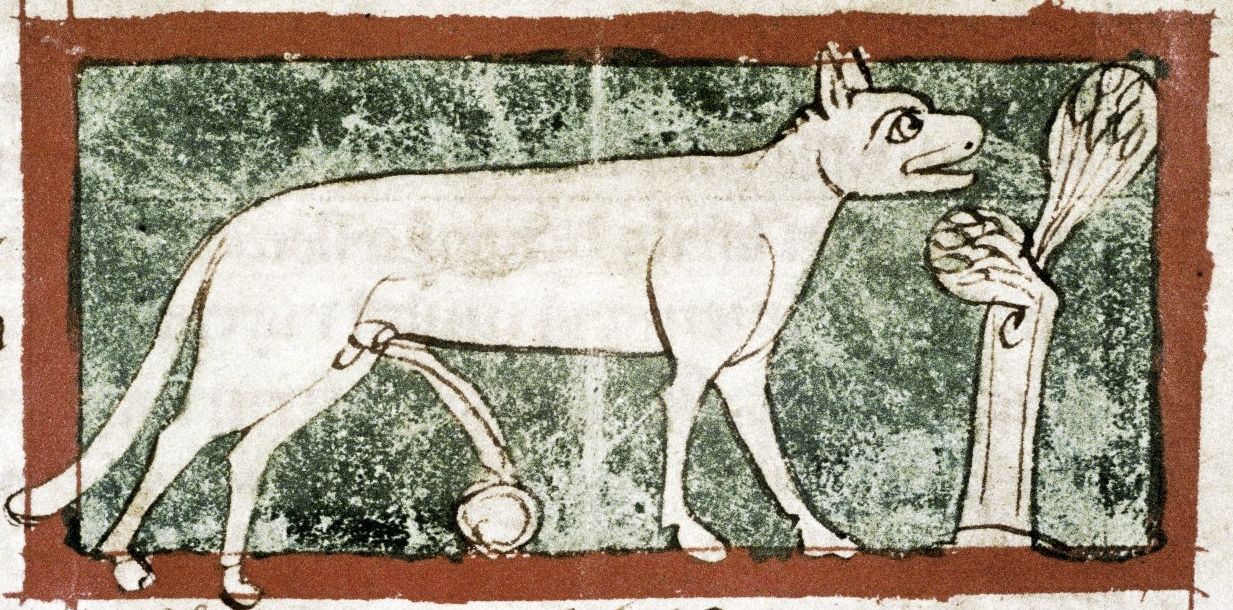
L is for the LynxThis is not the lynx that actually exists and has the cutest tufty ears. This is the mythical lynx, a wildcat going back to Greek and Norse mythology. These mythological creatures had magical pee. Not even kidding. Its urine allegedly hardened into a precious stone that could attract objects, including metal. |
M is for the Maltese TigerThe “Maltese” in Maltese tiger is referring to the color and not the land of origin. These are tigers that are blue-ish, like a Maltese cat. An American big game hunter (these guys again) named Harry Caldwell spotted one around Fuzhou, the capital of the Fujian province in China, in 1910. He wrote a whole book about it, Blue Tiger. |
N is for the NdalawoThe Ndalawo lives in Uganda, and it’s essentially an unusual coloring of a leopard. Its fur is black, fading to gray or white on its flanks. They hunt in packs, laugh like hyenas, and have a taste for human flesh. |
O is for the Ozark HowlerWhat a name, right? It’s also called the devil cat for its horns, the nightshade bear for its massive size, and the hoo-hoo for its eerie call. It hails from the Ozark region of the United States, and a television station in Arkansas received photos of one as recently as 2015. The Arkansas Game and Fish Commission claimed the photos were a hoax. More on the howler below. |
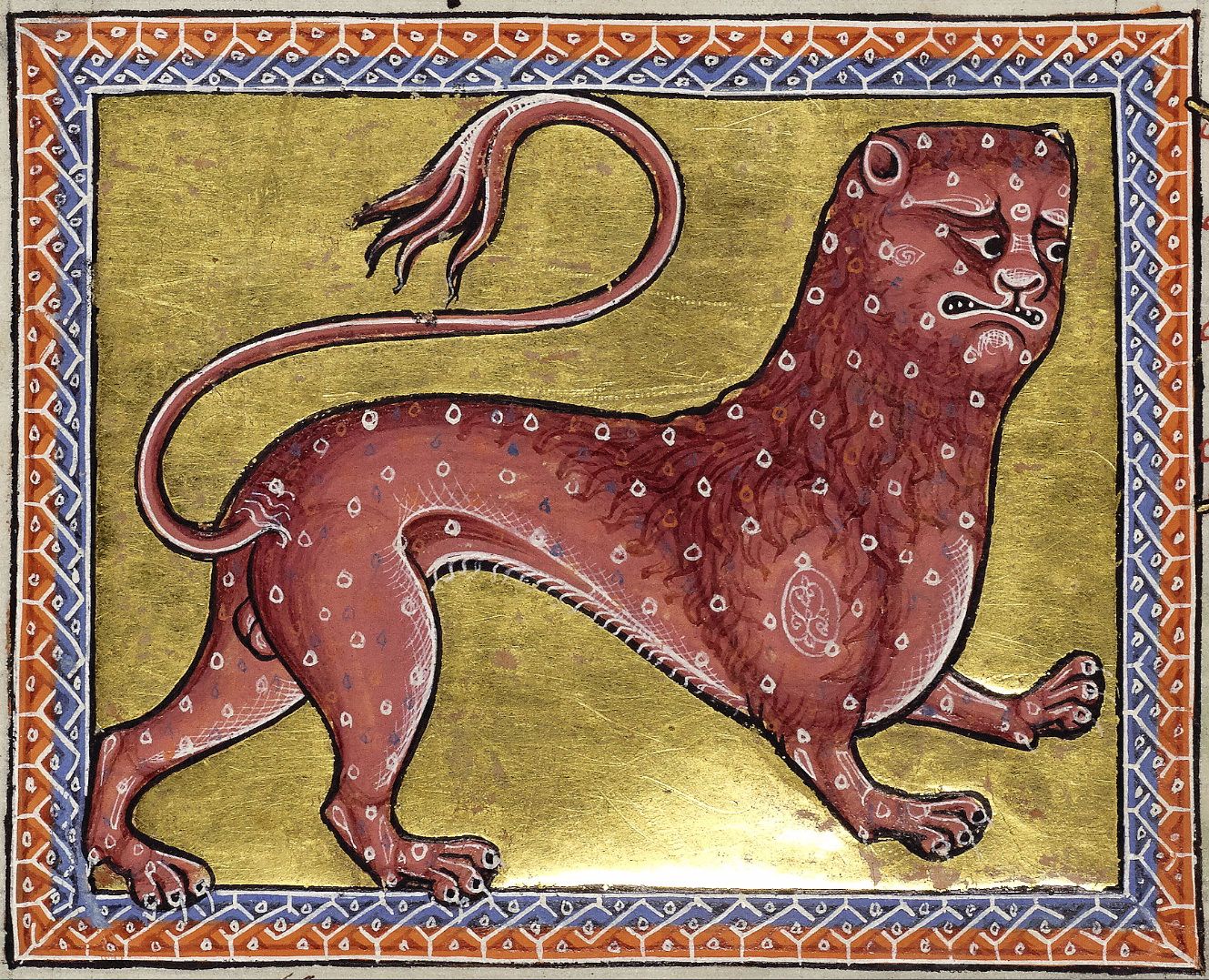
P is for the PardIf you love a medieval bestiary, you’ll love a pard. That is pard as in leopard. Descriptions of them vary wildly, but definitely the best one says they’re a beautiful, gentle beast whose only predator is a dragon. But also, according to a different bestiary, the Antichrist comes in the form of a pard. Clearly, a pard is whatever you want it to be. |
Q is for the Queensland TigerAustralia has its own cryptid cat. Dog-sized with stripes and a long tail, the Queensland tiger may be related to the extinct marsupial lions that lived until about 46,000 years ago. This animal is also called the yarri by Indigenous people of Australia, and their reports predate the 1871 report from Carl Sofus Lumholtz, a Norwegian ethnographer. |
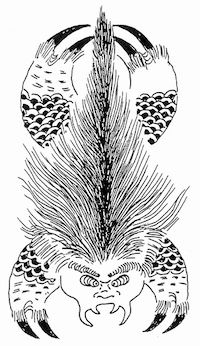
R is for the RaijūIn Japanese mythology, the raijū is a creature made of lightning whose body can take many forms, including a cat. During thunderstorms, it becomes agitated and can lash out. It also prefers to sleep in human belly buttons, which is simply too adorable. This leads some people to sleep on their stomachs during stormy weather. |
S is for the SplintercatSplintercats hail from the forests of the Pacific Northwest, where they bang into trees with their heads in order to release the caches of honey or possibly raccoons hidden within. Evidence of their work can be seen in forests with lots of snags. They always have a headache and, as such, are in a bad mood. They make an appearance in Julie Andrews’s children’s book The Last of the Really Great Whangdoodles. |
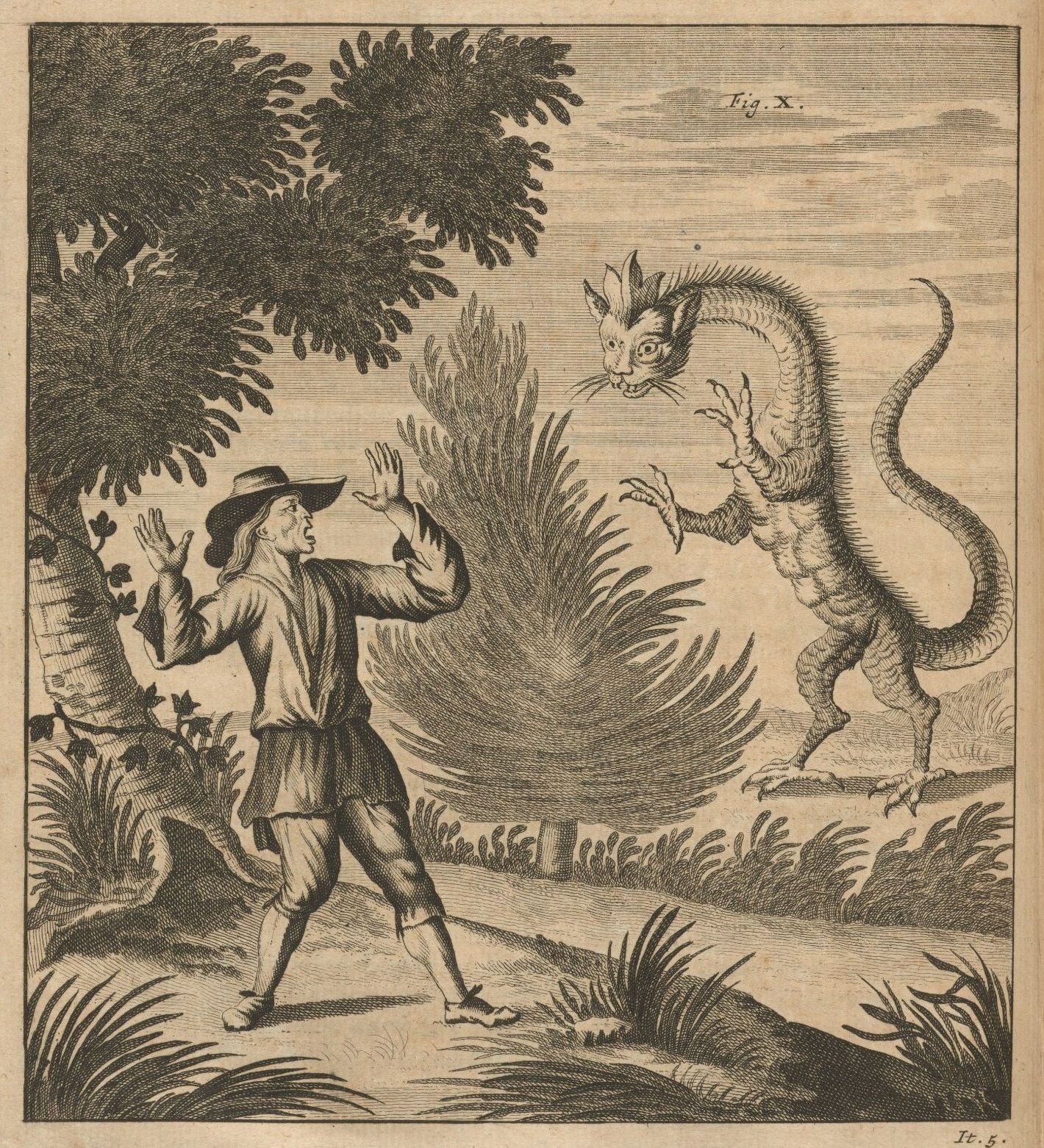
T is for the TatzelwurmImagine a cat-faced dragon, and you’ve got yourself a tatzelwurm. These animals appear in Alpine folklore and can possibly kill with their poisonous breath. There were many accounts of them from the 1600s onward, but whether they merited serious scientific study was the subject of debate throughout the 19th century. |
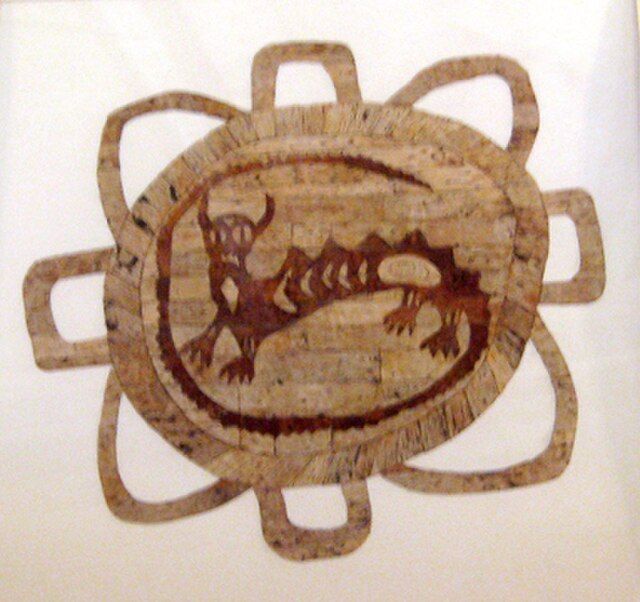
U is for the Underwater PantherAmong Indigenous peoples of the Great Lakes region, including the Anishinaabe, the underwater panther, also called the Mishipeshu, is a powerful creature of the underworld. They live in opposition to Thunderbirds, who reign over the sky. An amalgam of creatures with a feline body, horns, feathers, and scales, they live deep within lakes and rivers where they can cause storms and guard copper deposits. |
V is for the Vampire CatPicture it: Bladenboro, North Carolina, December 1954. A farmer reports his dog was dragged away by a cat-like beast and then found, blood drained. More reports of dead livestock follow, but then things settle down. The beast struck again in 2007, prompting an investigation from the show MonsterQuest. They conclude, confusingly, that the beast is an Eastern Cougar, a different cryptid on this very list. |
W is for the White DeathThe White Death is also known as the Alaskan Tiger. This cryptid is a white tiger spotted in swampy areas in Alaska. Some have theorized that the Amur tiger (previously known as the Siberian tiger) has all-white variations and could potentially survive in the Alaskan climate. According to legend, every time the White Death kills, it gains a stripe on its back. |
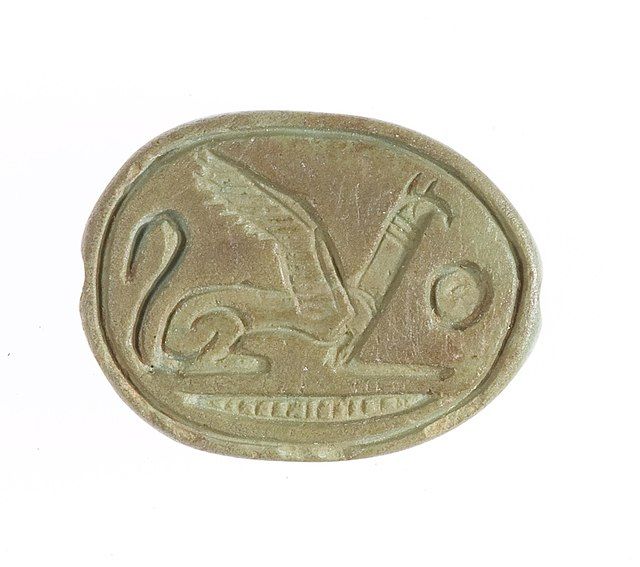
X is for the AxexYes, I had to get creative with X. The Axex comes from Egyptian mythology and is a hybrid creature like a griffin, with the body of a lion and the wings and head of a hawk. These kinds of figures have been common in mythologies from Egypt, Persia, Greece, Rome, and beyond. As a combination of two immensely powerful creatures, they are still very popular as logos and mascots around the world. |
Y is for the Yule CatYule Cat! In Iceland, the fierce Yule Cat stalks the countryside, ready to attack people who don’t have new clothes to wear before Christmas Eve. For knitters and crocheters like myself, this cryptid is the threat we need to make sure our loved ones receive their handmade gifts on time. That is, in fact, the theory for the origins of the story, as people needed strong encouragement to finish processing the fall wool harvest. |
Z is for the Zanzibar LeopardAt last, we’ve arrived in Zanzibar. The Zanzibar leopard is a subspecies of leopard that lives on Unguja Island, part of Tanzania’s Zanzibar archipelago. These beasts were thought to be extirpated, but a camera trap spotted one in 2018. This sighting has created hope for the leopard’s continued survival, rendering it a cryptid at the moment. |
The world loves a cat cryptid! Learning about the cat cryptids of the world means interesting themes arise. The exploits of colonizers in the Global South have certainly created a lot of cryptids. And perhaps the anxiety around humanity driving apex predators to the brink of extinction manifests as cryptids. And underneath it all, the inherent strength and mysterious nature of cats make it easy to imagine them imbued with all sorts of powers, both whimsical and fierce. Now, be sure to finish your knitting, sleep on your stomach during a storm, and stay out of the forest at night unless you want your own cryptid cat encounter.
Before you go, you might also like these posts:
- 10 Books About Cryptids and Cryptozoology
- A Ranking of Fictional Cats
- What Does the Image of the Cat Signify In Japanese Fiction?
Source : Around the World in Cat Cryptids, from Alaska to Zanzibar









